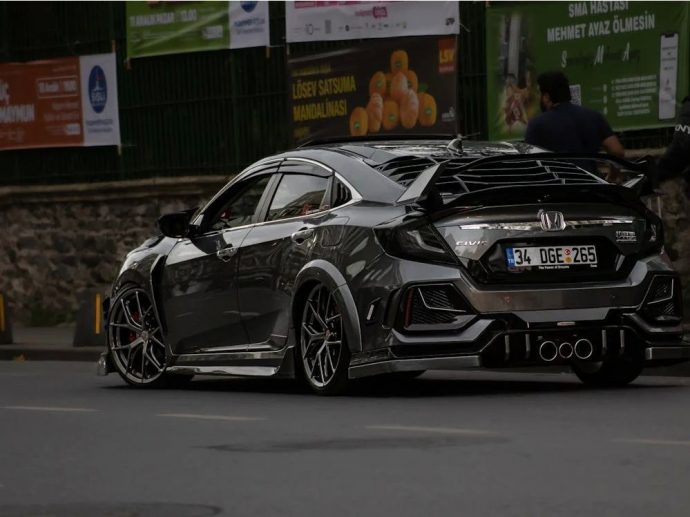Categories more
- Adventures (17)
- Arts / Collectables (15)
- Automotive (37)
- Aviation (11)
- Bath, Body, & Health (77)
- Children (6)
- Cigars / Spirits (32)
- Cuisine (16)
- Design/Architecture (22)
- Electronics (13)
- Entertainment (4)
- Event Planning (5)
- Fashion (46)
- Finance (9)
- Gifts / Misc (6)
- Home Decor (45)
- Jewelry (41)
- Pets (3)
- Philanthropy (1)
- Real Estate (16)
- Services (23)
- Sports / Golf (14)
- Vacation / Travel (60)
- Watches / Pens (15)
- Wines / Vines (24)
- Yachting / Boating (17)
Popular Vehicle Mods and Their Effects on Road Handling
Published
02/24/2025The automotive world brings together tradition and innovation, sparking endless creativity among car enthusiasts who want their vehicles to feel uniquely their own. Personalizing a car goes beyond aesthetics—it’s about improving performance, comfort, and overall enjoyment. Whether it's tweaking suspensions, upgrading engines, or swapping out stock parts, modifications let drivers shape their vehicles to match their personalities and needs.
Modifying a car can be exciting, but poorly installed or maintained upgrades have been linked to accidents, as noted by a popular car accident lawyer in Dallas. Each modification comes with its own pros and cons, impacting how a car handles on the road. With the right knowledge, car owners can make better decisions, transforming their vehicles into something that not only drives better but reflects their individual style and passion for the road.
Suspension Upgrades and Their Risks
Lowering a car with coilovers or sway bars can change how it responds on the road. Handling feels sharper, and the car grips the road better when taking corners, making it easier to maintain control during fast turns. Enthusiasts love the reduced body roll and sporty feel these upgrades offer, especially when managing winding roads or tackling hairpin curves on mountain drives.
But there are trade-offs. Misaligned wheels can cause uneven tire wear, and reduced shock absorption can make the ride rough, especially on bumpy roads. Regular checks on alignment and suspension components help prevent common issues, leading to smoother handling and extending the lifespan of vital parts.
Performance Tires and Their Handling Trade-Offs
Tires are key to how a car handles. Summer performance tires provide excellent grip in warm weather, enhancing traction and responsiveness during spirited driving. Their soft rubber compounds improve cornering ability. On the other hand, all-season tires are more versatile but don’t offer the same level of grip during aggressive driving.
However, soft compounds wear out faster and require more frequent replacements. They can also struggle in wet conditions, increasing the risk of hydroplaning. Choosing the right tires for the season and regularly inspecting them can help maintain control on different road surfaces and improve overall safety.
Aftermarket Brake Systems and Stopping Power
Upgrading brakes with big brake kits or slotted rotors can make a noticeable difference in stopping power. Larger rotors help dissipate heat, reducing brake fade during aggressive driving. These upgrades allow for faster stopping, which is a big plus on winding roads or racetracks. Many drivers feel more confident with improved braking performance.
But there are potential issues, like unbalanced braking, which can cause skidding or loss of control during sudden stops. For example, a poorly calibrated aftermarket brake system can cause one wheel to lock up before the others, leading to dangerous spins on wet or uneven surfaces.
Engine Tuning and Weight Distribution Shifts
Adding a turbocharger or remapping the ECU can give a car a major boost in horsepower. The result? Faster acceleration and a more thrilling driving experience. For example, turbocharged engines can go from 0 to 60 mph in significantly less time compared to stock models, turning even routine drives into exciting sprints. This extra power can make driving more fun, especially on open highways or racetracks, where the adrenaline truly kicks in.
However, added power can shift the car’s weight balance, affecting how it handles turns. For instance, turbocharged or supercharged engines often add weight to the front of the vehicle, which can create uneven weight distribution and impact cornering stability. Weight shifts can reduce traction during hard cornering, leading to oversteer where the rear tires lose grip.
Aerodynamic Kits and Stability at High Speeds
Spoilers, diffusers, and other aerodynamic kits can improve high-speed stability by increasing downforce. Spoilers help reduce lift, while diffusers manage airflow beneath the car, enhancing grip and control during fast driving. Drivers often appreciate the improved handling when managing sharp turns or maintaining speed on highways.
But these upgrades come with their own problems. They can increase drag, which leads to higher fuel consumption. Low-clearance parts can also scrape or get damaged on uneven surfaces or driveways. Planning for these factors and checking the vehicle’s clearance before installation can help maximize the benefits.
Customizing a car lets drivers blend creativity with performance, making their vehicles reflect their style while improving the driving experience. Upgrades like suspension adjustments, performance tires, and stronger brakes can enhance handling, stopping power, and acceleration. But every change comes with trade-offs, such as rougher rides, faster tire wear, or stability issues. Regular maintenance and choosing the right upgrades for your driving habits are key to keeping things safe and smooth. With the right balance, car enthusiasts can enjoy the excitement of a personalized ride that’s both fun to drive and built to handle the road ahead.















